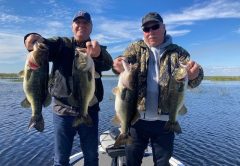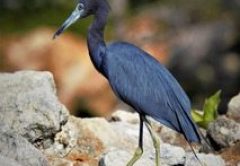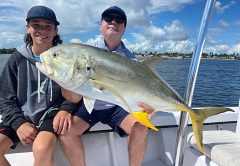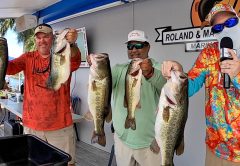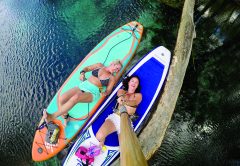Fall Fishing in Highlands County
For all you early risers, have you noticed the sun is coming up later in the morning? As summer winds down and we make the transitional change to fall, days become shorter. Overnight air temperatures begin to fall from the summer-time highs of 76 and 78 degrees to the low 70’s and high 60’s. Cooler nights mean cooler water and a dramatic change in bass fishing in south-central Florida.
Surprisingly, most biologists will tell you, bass and other panfish typically put most of their body weight on during the late summer, early fall periods. Much of this weight is in preparation for the early spawn beginning in late fall and early winter, but the warmer water typically increases their metabolism requiring higher calories to be consumed.
Bass can be aggressive during the hot summer months, but often difficult to find. Most will seek refuge in the deeper sections of the lake or in the heaviest cover. But come fall with decreasing water temperatures and less sunlight, bass will feed more heavily and become increasingly more aggressive.
That translates into the best bass fishing of the year!
September marks the beginning of the fall bass fishing season that only gets better and better as we move into October and early November. Not only are the bass more cooperative and easier to catch, the weather begins to cool off and for many fishermen; the ability to stay on the water becomes much more satisfying.
Early morning will still be the strongest bite of the day, but bass will be looking for feeding opportunities all day long, and unlike the past few months, they’ll return to the shallows in their search for food.
Spinnerbaits become one of the best options, and will provide plenty of action whether ripped across the surface or slow-rolled along the bottom or above the grass. Small trailers will aid in giving you spinnerbait even more action, and potentially more strikes.
Although bass can be very aggressive at this time of the year, short strikes may occur, particularly if you’re using a trailer plastic. This can be easily prevented by adding a trailer hook. A wise decision any time of the year when using a spinnerbait.
Soft plastics, Texas-rigged, Carolina-rigged or Drop Shot can also be very effective in the fall. Working the edges of bulrushes, pencil reeds and lily pads with a plastic worm or jig is increasingly effective as we move into and beyond September.
Shallow-running crankbaits and stick-baits should also be considered in your fall fishing selections.
Just remember, bass can become increasingly active during this period of the year and virtually every lure type and description may tempt a bass who during other times of the year might ignore the same offering.
Rattletraps can also be effective, particularly as a search lure. And watch for indications of schooling bass. Often surface activity will indicate a school of bass chasing baitfish, but water birds can also be a strong indicator. And don’t automatically assume schooling bass are small.
Large schools of bass in the 5-7 pound range are fairly common throughout the summer and into the fall and are often overlooked. Watch for surface disturbances and you may well be surprised at the quality of the fish.
For those of you who keep your catch, be mindful of the change in Florida’s regulations that occurred in July of this year. In the past, different sections of Florida had different size and limit restrictions, plus many lakes were designated as “slot lakes”. But the new regulations allow each licensed fisherman to keep 5 bass per day, with no minimum size restriction, but only one bass over 16.”
Most bass fishermen like myself have been releasing bass since way back in the 70’s, but biologists now claim that harvesting the smaller bass will allow the larger bass to grow even larger by providing more baitfish. Smaller bass eat often and typically prey on small baitfish that larger bass might ignore. By removing a number of the smaller bass, small baitfish get an opportunity to grow larger and provide a more satisfying meal for a larger bass. Ultimately, big bass get even bigger.

